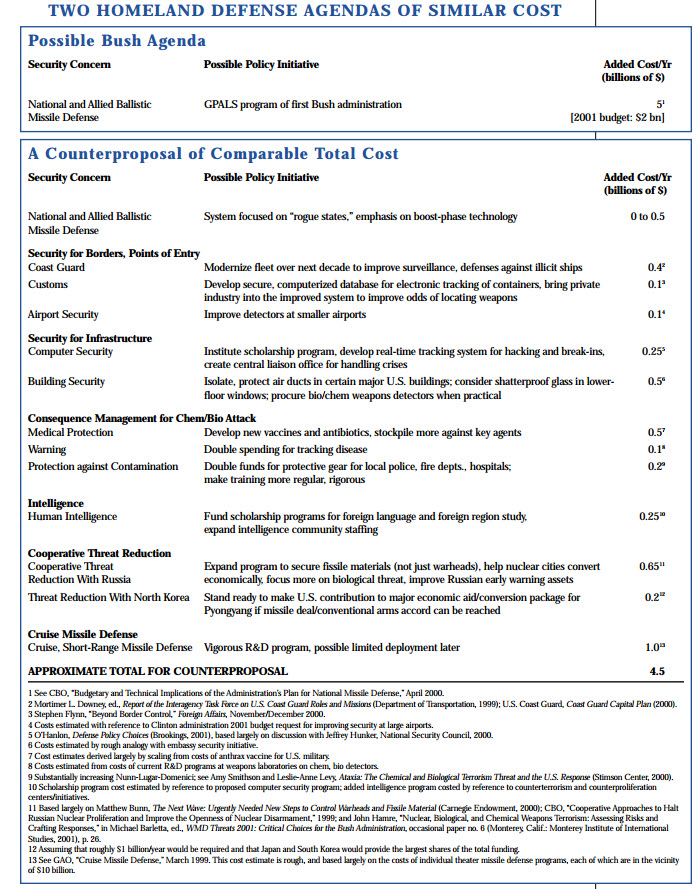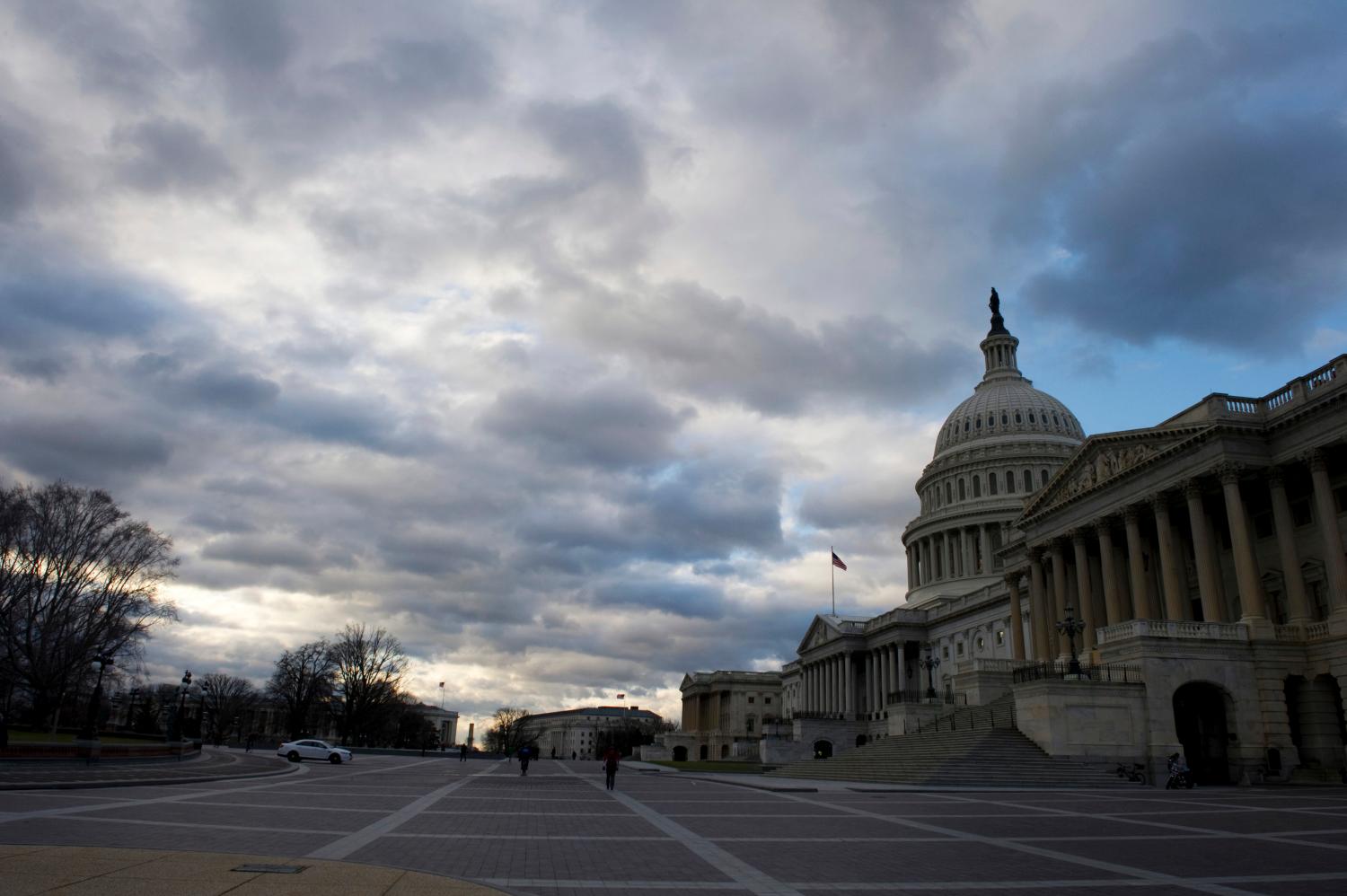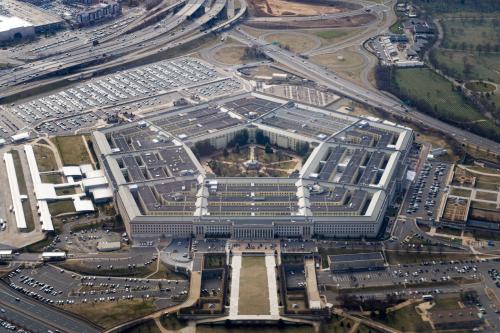President Bush is correct in his assertion that the United States and its allies should eventually be prepared to defend themselves against long-range ballistic missile attack. He has also been wise to declare the current Anti-Ballistic Missile (ABM) Treaty inappropriate for the modern era, and to leave no doubt in the minds of allies, neutrals, or enemies that his administration intends to move beyond the treaty and build a missile defense system when prudent and possible. However, there are dangers in the Bush administration’s apparent approach to protecting the American homeland. The plan—though not yet complete—may focus somewhat myopically on the ballistic missile threat, while largely ignoring other, equally imminent dangers.
In addition to eventually building a ballistic missile defense system, America should also enhance safeguards at its borders and other points of entry, increase protection for critical infrastructure, prepare more rigorously to address the consequences of any chemical or biological attack, further improve the intelligence community, seek to expand cooperative threat reduction programs with Russia and North Korea, and consider developing a national cruise missile defense.
POLICY BRIEF #86
The Bush administration appears to be of two minds on national missile defense. At times, it has expressed rather modest ambitions. For example, in his May 1 speech on the subject at National Defense University, President Bush focused on the threat that could be posed by just a few missiles from the so-called rogue states, and hinted at the possibility of developing a new framework with Russia for nuclear weapons and defensive systems. On the other hand, administration officials, including the president, have been dismissive of the ABM Treaty, displaying no interest in modifying it to allow for a small-scale national missile defense while still prohibiting large-scale defenses. They have expressed interest in many different possible anti-missile technologies, suggesting a multi-tier and large-scale defense architecture. These positions, together with the stances of previous Republican administrations and the known personal views of many of Bush’s top advisers, suggest interest in an unconstrained and ambitious missile defense.
If the Bush administration opts for such an ambitious route, Russia and China could feel strategically threatened and respond in ways that might exacerbate weapons proliferation problems and harm U.S. security. In addition, fiscal constraints may mean that other programs designed to protect the United States and its allies against weapons of mass destruction and terrorism will be shortchanged. It is not just a question of money, either; if the administration remains fixated on missile defense, it may not pay enough attention to other threats. Congress should therefore attempt to broaden the homeland defense agenda beyond the narrow scope of missile defense, and indeed beyond the purview of the Department of Defense alone.
The remainder of this policy brief first estimates how much an ambitious missile defense plan—perhaps comparable in scale to what the Bush administration will ultimately advocate—might cost. Second, it develops an alternative agenda of roughly the same total cost, including, but not limited to, missile defense, and covering a broad spectrum of possible threats to the United States.
Cost of an Ambitious Missile Defense
Suppose that the Bush administration adopts a multi-tiered and large-scale missile defense architecture, designed to counter not only small attacks from countries such as Iraq or North Korea but also a larger-scale attack, be it a deliberate strike from China or an accidental or unauthorized launch from Russia. How much might such a system cost?
The answer depends on the parameters of the system. For illustrative purposes, assume that the current Bush administration might adopt the plan espoused by the previous Bush administration. Known as Global Protection Against Limited Strikes, or GPALS, that architecture would have provided a large, two-tiered defense for the United States and its allies. It included six land sites in the United States, each fielding some 125 interceptor missiles, as well as 1,000 “Brilliant Pebbles” or small kinetic-kill interceptors in low-Earth orbit. The notional goal was to shoot down up to 200 warheads from an accidental or unauthorized Russian launch (allowing several interceptor missiles per warhead). A defense of that size would theoretically also be large enough to challenge even a much-expanded Chinese missile force, since at present the PRC deploys only 20 long-range missile warheads.
As a crude means of estimating the cost of such a system, consider first the Congressional Budget Office’s $50 billion estimate of the acquisition cost of the Clinton administration’s proposed “C3 capability.” That capability included two sites with a total of 250 interceptor missiles, as well as a total of nine X-band radars and 24 SBIRS-Low infrared satellites. To expand that capability to 750 interceptors at six sites would not be three times as expensive, since neither research and development costs nor sensor costs would have to increase very much. But many more interceptor missiles, additional ground bases, and a larger command/control infrastructure would be required. Total acquisition costs for the ground-based capability would probably range from $80 billion to $100 billion.
It is more difficult to estimate the costs of the space-based weapons since they are further from technological maturity. At a minimum, the “brilliant pebbles” would almost certainly each be at least as expensive as an interceptor based on land, making for a total price tag of $20 billion to $30 billion. (In fact, even if launch costs were as little as $5 million a ton, and each interceptor weighed only two tons, expenses just for lifting the payloads into orbit would be $10 billion.) Factoring in development and testing costs would surely push the program to at least $40 billion—and that is quite optimistic.
All told, a GPALS-style system might cost $120 billion to $150 billion to develop and deploy—making for an average of $7 billion a year over a twenty-year period. (These estimates do not count the costs of the airborne laser and other technologies designated as theater missile defenses under the Clinton administration; such programs are assumed to continue as well.) That would translate into a $5 billion increase, relative to the $2 billion budget for national missile defense in 2001.
A Broader Agenda for Homeland Defense
Given the various threats to American citizens and society, the United States might be better advised to diversify its homeland defense investment portfolio. Rather than devote all of a $5 billion increase in the annual budget to long-range missile defense, it should improve response capabilities against numerous dangers.
In a previous policy brief (#70) and a recent Brookings book, Defending America: The Case for Limited National Missile Defense, James Lindsay and I proposed a modest-scale, two-tier missile defense emphasizing deployment of so-called boost-phase technologies. Such a defense might be deployed for the roughly $2 billion a year provided for national missile defense in 2001, though an annual cost of $2.5 billion—or $0.5 billion more than 2001 expenditures—is a more cautious estimate. (To keep the defense limited, the United States would also have to avoid testing theater missile defense systems like THAAD and Navy Theater Wide against long-range missiles.) In addition to providing a limited national missile defense, the country might also do the following:
- increase security at U.S. borders and other points of entry;
- increase security for key physical infrastructure in the United States;
- make greater preparations to manage and mitigate the consequences of any mass casualty attack on American soil;
- improve human intelligence programs for countering terrorism;
- expand cooperative threat reduction efforts, most notably with Russia and North Korea; and
- develop and ultimately deploy national cruise missile defense.
Security for Borders and Other Points of Entry
Defending against missiles will do America little good if an enemy could simply sneak weapons of mass destruction into the United States. The threat should not be overstated; delivering a “suitcase bomb” is not as trivial as sometimes claimed. For example, a fledgling nuclear power would probably be unable to produce a bomb weighing much less than a ton—hardly something that could fit into a suitcase and possibly even difficult to fit into a car or small plane. In addition, if a country waited to try bringing a weapon of mass destruction into the United States until it really needed it—during a time of crisis or war—it would have a much harder time evading detection because of heightened security. But the threat is real nonetheless, particularly for a scenario in which terrorists employed chemical or biological agents.
The United States is hardly defenseless at its borders today. But it inspects only a small fraction of the containers and manages to stop only a small fraction of the drug contraband entering the country. The Coast Guard fleet is aging, making it difficult to stop suspicious boats approaching U.S. ports. And airport security still needs improvement against certain types of explosives, particularly in smaller cities.
Perfect border, port, and airfield security is not attainable. But a number of concrete steps could be taken to further complicate the task of any group or country attempting to smuggle mass casualty devices onto American soil. The most expensive would be recapitalizing the Coast Guard fleet within a reasonable span of time—say 15 to 20 years—which would also have benefits for boater safety, the drug war, and other purposes. An additional step could entail equipping many of the country’s smaller airports with state-of-the-art detection devices for explosives. And perhaps the most important measure of all would follow the idea of Steve Flynn, Coast Guard officer and scholar at the Council on Foreign Relations. He has proposed developing a database for real-time tracking of containers headed toward U.S. shores, which would require cooperation from shipping companies. Those companies that participated, and showed they were serious about monitoring their own cargo, would not have to wait in long customs lines when bringing merchandise into the United States. Customs agents could then focus their limited resources on monitoring and inspecting suspicious companies. Taken together, these measures would cost $500 million to $700 million a year.
Security for Infrastructure
In recent years, the government has greatly increased its spending to protect physical infrastructure. Most such efforts, however, have focused on protecting federal assets—primarily those of the Departments of Defense and State.
Greater efforts are needed. For example, targeted graduate student scholarships could produce a stronger cadre of individuals competent to improve cybersecurity. The government should also create electronic systems to detect hacking efforts in real-time, if possible, and establish a permanent office to help reconstitute computer networks after attack—modeled partly on the temporary office established to cope with Y2K concerns two years ago.
Federal help should also be made available to improve the security of key state, local, and private buildings against physical attack. All-out efforts on a par with the State Department’s embassy relocation and reconstruction programs are generally not needed (or affordable). But efforts to place building air intakes in relatively secure locations above street level, to use shatterproof glass in the lower floors of certain prominent structures, and similar, modestly priced measures may make sense. Once affordable and relatively unobtrusive detectors for chemical and biological agents are available, it would also make sense to deploy them in key buildings as well as subways and certain other public facilities. Costs for the computer programs could reach $250 million a year for an ambitious effort. Costs for building and infrastructure security, if limited to the above types of steps, could be funded to good effect at half a billion dollars a year.
Consequence Management for Chemical or Biological Agent Attack
During the Clinton administration, U.S. officials took a number of steps to improve the country’s ability to respond to a terrorist attack using chemical or biological agents. Under the Nunn-Lugar-Domenici program, named for the senators who sponsored the original legislation, local police departments, fire departments, and hospitals in large cities have received response training as well as some protective equipment. Funding has been obtained for stockpiling key vaccines and antibiotics to treat victims of an attack and limit the risk of epidemic diseases such as smallpox. Various federal teams have been created, some within the military and some outside, to aid in rapid response. The National Guard has increasingly been given the mission of preparing to manage the aftermath of any such attacks, and a federal center for research, coordination, and training has been established. The Bush administration has just proposed a significant increase in research and development of chemical and biological detectors, an idea that merits support.
Much more needs to be done, however. Most of the Nunn-Lugar-Domenici efforts have focused on the chemical weapons threat more than the biological agent danger. To redress this situation, health research and development efforts should be increased substantially to develop vaccines and antibiotics for a broader array of agents, and to explore methods for strengthening the human body’s immune system. Given that the cost of bringing a single new drug to market is often half a billion dollars, and that a number of new drugs will be needed in the years ahead, an annual funding increase of $500 million is warranted. Funding for tracking infectious disease worldwide could also benefit from a doubling of funding, at a yearly additional cost of perhaps $100 million. It should be used partly to increase “syndrome surveillance” that can alert experts to the possible outbreak of a disease in its early stages by making better use of data that is often already available. Such efforts should also link doctors to public health providers more effectively than has been the case to date. As with the above proposal for strengthening the Coast Guard, such efforts would have benefits outside the national security realm as well.
Some additional effort is also required for coping with the chemical weapons threat. Follow-up training should become more regular and rigorous, standards for protective equipment should be raised, and more cities should be brought into the effort. Additional yearly funding of $200 million is appropriate.
Intelligence
In recent years, the U.S. intelligence community has established a counterterrorism center and also intensified various counterproliferation efforts against weapons of mass destruction. However, it is doubtful that such efforts have been adequate. Reports are still heard about a dearth of regional experts focused on parts of the world from which terrorism often emanates, such as the Middle East. Were the intelligence community not only to expand staffing for such regions, but also to consider establishing scholarship programs for students interested in studying Arabic history and language as well as certain other specialties, added costs could total $200 million to $300 million a year.
Cooperative Threat Reduction
During the 1990s, the United States and key allies have managed to defuse or mitigate several potential threats by working cooperatively with the very countries that might otherwise have posed those threats. This approach has its limits—but probably should be expanded.
The two most notable successes for this approach have focused on Russian nuclear weapons and North Korean nuclear reactors. In regard to Russia, the Department of Defense’s Nunn-Lugar program (different from the Nunn-Lugar-Domenici effort) has succeeded in consolidating, securing, and often dismantling a number of Russian nuclear weapons. Similar efforts, such as the Nuclear Cities Initiative and International Science and Technology Center, sponsored partly by the Department of Energy, have temporarily employed Russian scientists in more benign activities than they might otherwise have pursued. In regard to North Korea, several countries, including the United States, have worked to replace North’s Korea’s nuclear reactors with more proliferation-resistant designs that could not be easily used to produce materials for nuclear weapons.
But more needs to be done in regard to both of these countries. In Russia, a good deal of plutonium and highly-enriched uranium remains dispersed and poorly protected throughout the country, even if most strategic systems and warheads have by now been put under better lock and key. In addition, while many Russian scientists have been temporarily employed on non-weapons activities, they have not yet found alternative and economically self-sustaining occupations. Cooperative threat reduction programs should address these problems. They should also focus more attention on facilities and scientists involved in biological weapons activities. Finally, enhanced U.S. efforts to help Russia repair its early warning radar and satellite networks make sense, and should extend beyond current proposals for a joint data assimilation center to actual assistance with the hardware Russia needs to repair its own warning system. Total annual costs for these increased efforts are estimated at $600 million to $700 million.
A similar expansion of effort makes sense in North Korea—assuming, that is, that Pyongyang can be induced to take the necessary reciprocal steps. In 2000, the Clinton administration was moving in the direction of a deal with the North that would have ended its production and export of medium-range and long-range missiles in exchange for substantial financial compensation. Upon taking office, President Bush showed an unfortunate predisposition against such talks. However, he later changed his mind—and also rightly emphasized the importance of carefully verifying any deal with North Korea while also bringing conventional arms reductions onto the negotiating agenda. Conventional arms are at the core of the intra-Korean conflict, and probably pose the most acute military threat to South Korea. Moreover, without reductions in such arms, North Korea could not plausibly begin to reduce its defense expenditures and rebuild its economy. If North Korea ever could be convinced to accept a “grand bargain” in which it would give up missiles and cut conventional weapons in exchange for smaller conventional arms cuts from South Korea and financial and technical aid, the United States and its security partners in the region should agree to it. Japan would probably provide the majority of economic aid, and South Korea would provide resources as well, but a significant U.S. contribution of perhaps $200 million a year could also be required.
Cruise Missile Defense
Finally, even though Secretary of Defense Donald H. Rumsfeld has sometimes noted the threat of cruise missiles, his rhetorical and budgetary emphasis has been on the ballistic missile threat. To be sure, the United States is already developing various theater missile defense technologies with potential applicability to the cruise missile problem. But the country is making no serious effort to investigate a cruise missile defense for American territory.
A major effort to explore appropriate cruise missile defense architectures is warranted. It should consider additional technologies useful for territorial defense, such as balloon-like aerostats for broad area surveillance. Ultimately, deployment of a limited, nationwide cruise missile defense may also be appropriate, requiring expenditures on the order of $1 billion a year.
Combining the elements of the alternative, broader homeland defense agenda brings the added annual cost to just under $5 billion—comparable to what the Bush administration would have to add to long-range missile defense efforts to fund a large-scale, multi-tiered capability.
Conclusion
The choice between the two approaches need not be so stark. In theory, the Bush administration might itself elect to pursue both a large missile defense and other programs for countering weapons of mass destruction and terrorism. But given constraints on resources, particularly in the aftermath of the tax cut and the recent economic slowdown, it is not clear that the country can or will do so. Moreover, large-scale missile defense could directly impede certain other parts of the alternative agenda, notably the proposal for expanded cooperative threat reduction with Russia. Tough choices will thus be necessary. In that event, a balanced, multi-faceted agenda for countering a variety of threats to the United States—including but not limited to defense against long-range missiles—makes more sense than an overly ambitious missile defense system.

The Brookings Institution is committed to quality, independence, and impact.
We are supported by a diverse array of funders. In line with our values and policies, each Brookings publication represents the sole views of its author(s).




